Cosmological Principle:
All observers see roughly the same universe, i.e.universe is isotropic.
- Obviously this is not true on a small scale!
- Atoms => Stars => Galaxies=> =>Clusters=>Superclusters
- At each stage the distribution becomes more regular, and finally there is no evidence that superclusters clump
- Note: this is a hope, not even an observation!
So how did it all begin?
The water beetle was sent on an exploration, and after darting about on the surface and finding no rest, it dived down to the depths, whence it brought up a bit of mud, from which the earth grew by accretion.
Apache Creation Myth
Recession of galaxies
| Doppler effect gives
\color{red}{
z = \frac{{\lambda - \lambda _0 }}{\lambda } = 1 - \frac{{{\rm{original wavelength}}}}{{{\rm{measured wavelength }}}}{\rm{ }}}
Vel. of recession
\color{red}{
{\rm{v = zc = c}}\left( {\frac{{\lambda - \lambda _0 }}{\lambda }} \right)}
|
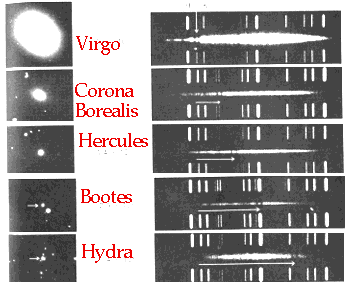 |
-
| Found in 1920's (Hubble, Humason, Slipher) that faint galaxies show a red shift: fainter the galaxy, faster the recession. |
 |
Hubble was able to measure distances to closer clusters and found that velocity ∝ distance
v = H d
H is Hubble constant: As measured by Hubble H = 550 km s-1/Mpc: Now we know
H ~ 65kms-1/Mpc
1 Mpc (megaparsec) = 3x1022 m i.e. the average galaxy at 100 Mpc is receding at 6500 km/s |
 |
Big Bang (once over lightly)
-
| Note although all galaxies are receding from us, does not imply we are at the centre: in the currant cake model all currants see all the others as recediing |
 |
| RULE 1 in Physics 100: Never mix your units!)
\color{red}{
\begin{array}{l}
H = 70 \times 1000/3 \times 10^{22} \approx 2 \times 10^{ - 19} s^{ - 1} \\
\Rightarrow \frac{1}{H} \approx 5 \times 10^{17} {\rm{ s }} \approx 17 \times 10^9 {\rm{ yrs.}} \\
\end{array}}
|
 |
| What does this time represent? Must be age of universe: if expansion does not change
i.e. 17x109 yr. ago, all the galaxies were in the same place. Universe had a beginning, implied by the big bang. Can run Hubble expansion back: we would like to use this to predict what will happen in the end |
|
Where was the Big Bang?

- A 2-D analog is the surface of a balloon: Note the following:
- It has no centre in 2-D space.
- Deflating it reduces it to zero size: i.e. at the moment of the big bang, not only matter was created, but also space and time
- The galaxies are not receding from us: space is expanding
- We require a curved 2-D surface embedded in a 3-D volume.
What's going to happen in the end?
The sky becomes black, Earth sinks into the sea From Heaven fall the bright stars The sea ascends in storm to Heaven It swallows the Earth, the air becomes sterile
From the Hyndluljod (Iceland)
Will the universe will expand forever?
so...
- \color{red}{H^2 r^2 = 2G\frac{{4\pi }}{3}\rho r^2 }
(we got lucky: the r cancels out!).
- We can turn this round and write it as an equation for the density ρ
-
\color{red}{
\rho _0 = \frac{{3H^2 }}{{8\pi G}}}
- Hence the "critical density"
- ρ₀ ~ 6 x 10-27 kg m-3 ~ 3.6 Hydrogen Atoms m-3 (Number is flaky: we'll use 4).
- Instead of the actual density, we'll use
\color{red}{
\Omega = \frac{\rho }{{\rho _0 }}}
because some errors cancel out.
- The entire future of the universe is given by this one number!!!!!!!!!
-
I am the Alpha and Omega, the Beginning and the End, saith the Lord. Revelations I v7.
So if
- Ω > 1
Universe come to nasty end in ~ 50 x 109 yr.
- Ω = 1 Universe expansion slows down asymptotically : "critical universe"
- Ω < 1₀ Universe expands forever
- More important:we live forever if Ω ≤ 1, (well maybe).
|
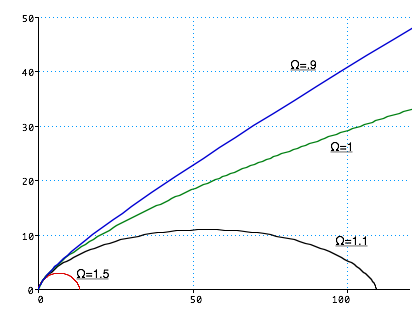 |
- Note that this implies that the rate of expansion must change
Gravity will slow down expansion in the early stages, so Hubble's constant isn't a constant... when the universe was smaller, v was larger so H must have been bigger. Better "the Hubble parameter"
|
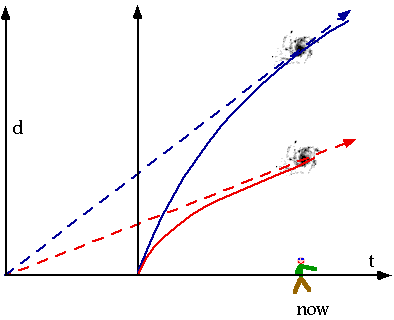 |
- From this (incredibly naive) model we can deduce:
- Density
- Expansion time
- Temperature of the universe
- Corrections if the density is not critical
There is still a
big dark mystery out there
There is only a single God, Mixcoatl, whose image they possess, but they
believe in another, invisible, god, not represented by any image, called Yoalli
Ehecatl, That is to say, God Invisible, Impalpable, Beneficent, Protector, Omnipotent
by whose strength alone ... rules all things
Nahuatlan Myth
- So how do we weigh the universe?
- Can only see luminous matter
- How much Dark Matter is there?
First Guess
- Density of dark matter ~ 0: what you see is what you get
-
Count number of galaxies in a region of space, assume they consist of stars much like the sun:
M = M0L
L0
|
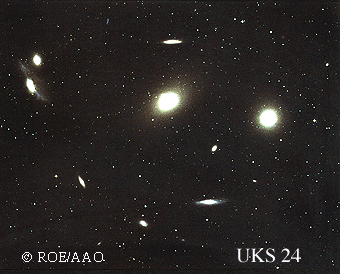 |
-
| Obviously must average over large enough volume such that universe is smooth R > 100 Mpc, and the universe is a very lumpy place! |
 |
- ⇒ Density Ω = .01 ⇒ We live forever!
-
| Note that although we always show dense bits of the universe there are a lot of voids out there. The biggest void here is 650 Mpc across: no more than a dozen galaxies (each dot is a galaxy: "picture" is slice of universe out to 1.5 Gpc |
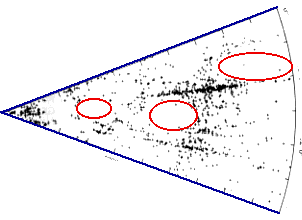
|
- But maybe there is some dark matter we can't see....
Masses of Spiral galaxies
| direct observation i.e. measurement of velocities of individual stars in nearby => rotation curves or measurement of hydrogen via 21cm line or estimates of no. of stars |
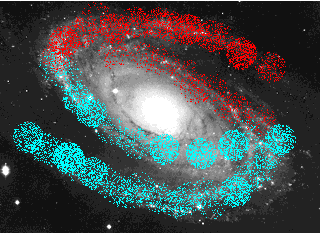 |
| Luminosity of galaxy should reflect mass: brightest at centre, so most of mass should be there.
Just like measuring mass of Jupiter via Io's orbit |
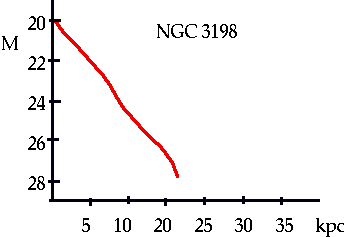 |
| Typical Spiral (NGC3198) R ≈ 20 kpc but outer parts are just seen as H gas |
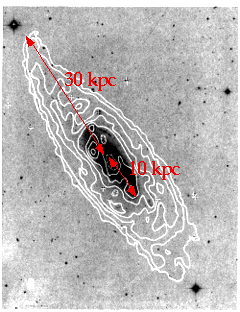 |
| Most of the light is fairly concentrated, so this should be good approx to the mass. ⇒ predicted rotation curve.
i.e. velocity curve doesn't drop as expected |
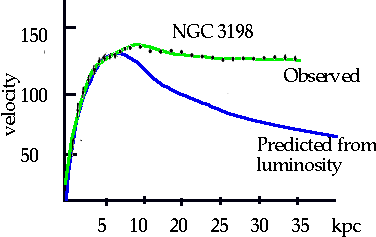 |
| Can fix this by saying that galaxy has halo of dark matter around it.
Halo + core add together to give correct curve |
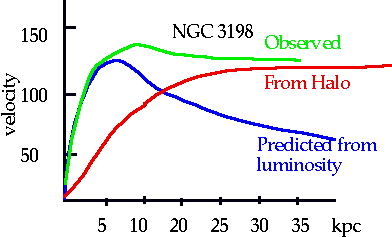 |
| Note this is not unique to NGC 3198: all measured spirals show same. |
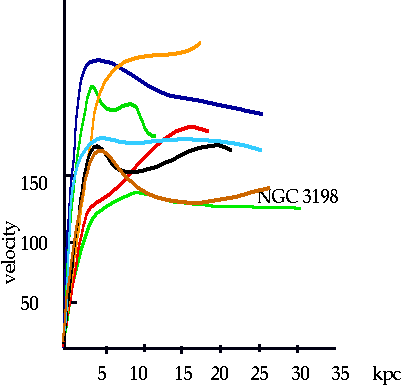 |
For spirals
\color{red}{
\frac{{10M_o }}{{L_o }} < \frac{M}{L} < \frac{{40M_o }}{{L_o }}}
- Implication:
- Mass of observed galaxy ≈ 1010 M₀,
R ≈ 2 kpc (for core)
- Mass of halo ≈ 1013M₀, R ≈ 100kpc (except that we can't measure out there!)
- i.e. the stars represent a tiny amount of the mass in a galaxy. What is the rest?
Large clusters of galaxies:
| A check: The Coma cluster |
 |
| Large clusters contain a lot of hot gas, which is strong X-ray source. X-ray pictures measure density and temp: |
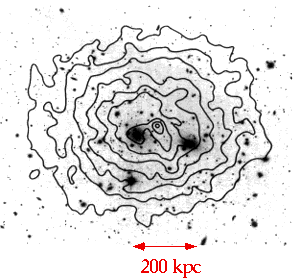 |
Also large clusters show gravitational lensing, can get quantitative estimate 
| For Abell 2218 we seem to have
\color{red}{
\Omega \sim .2}
i.e. there at least 100 times as much dark matter as luminous matter
|
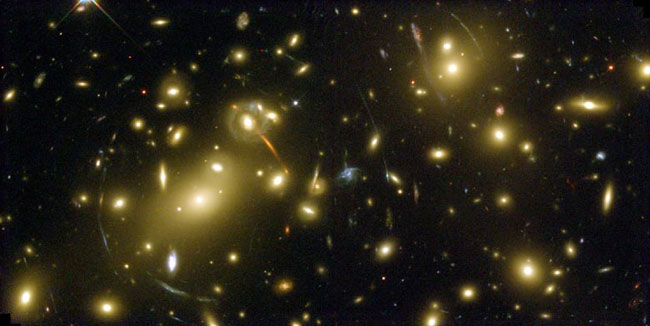 |
| Note that the larger the object, the more massive (proportionately) that it is.
|
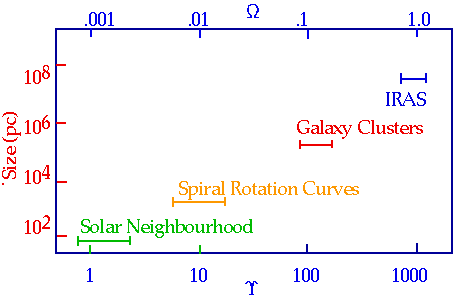 |


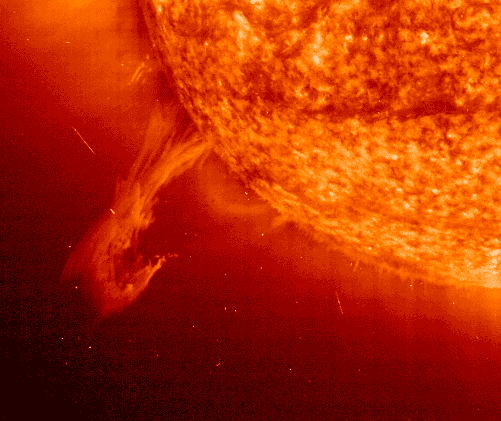

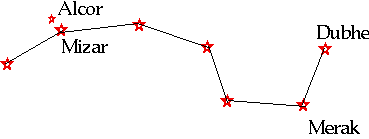
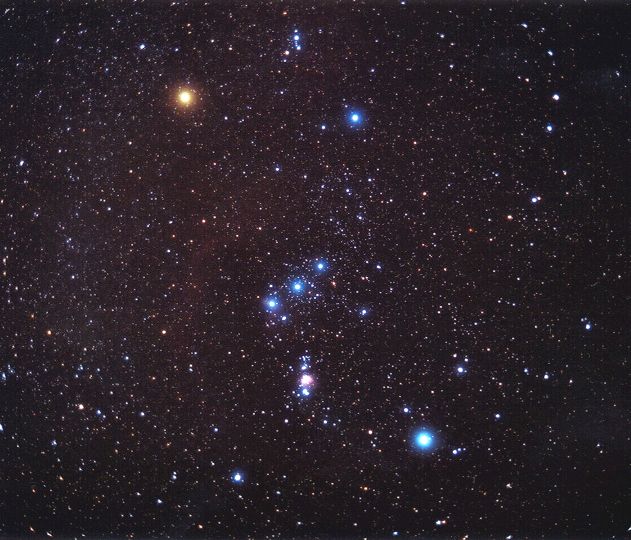
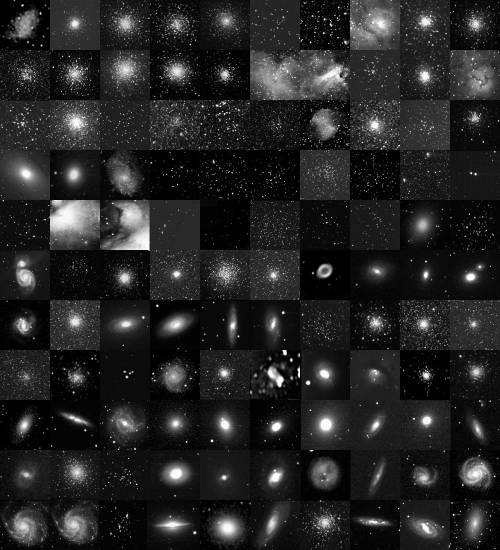
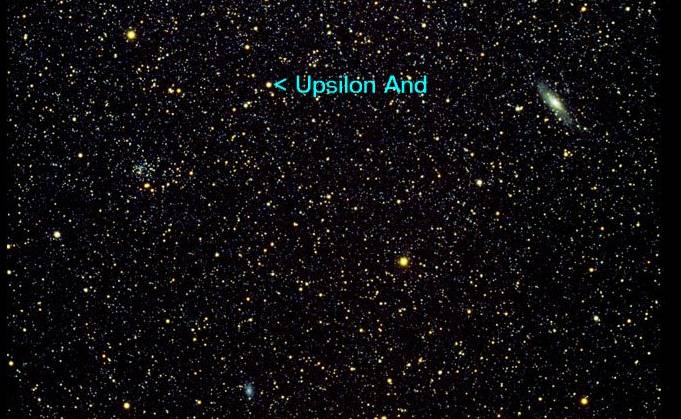
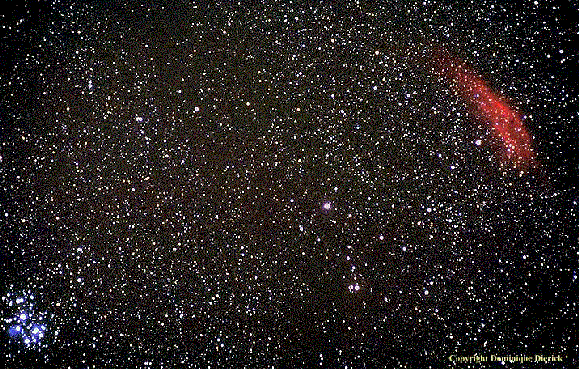
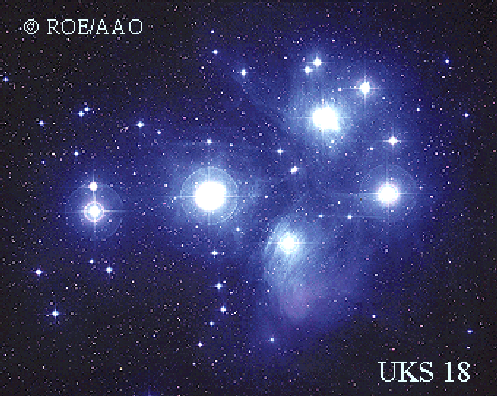
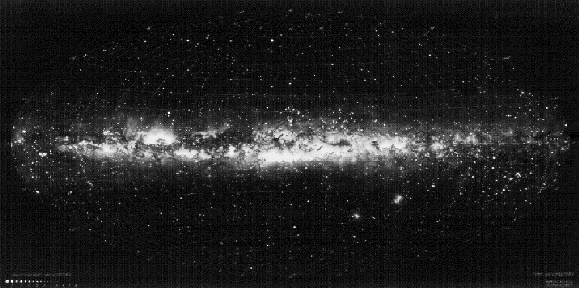
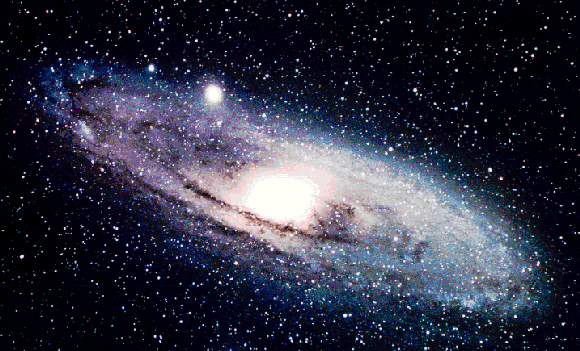
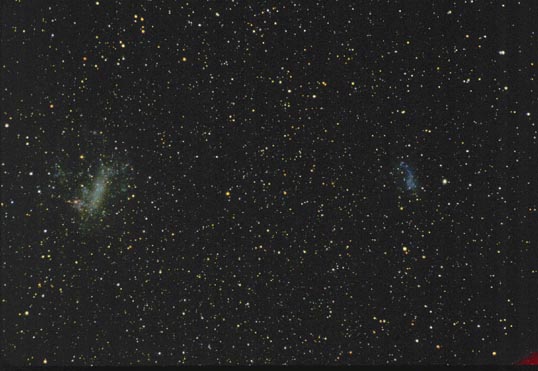
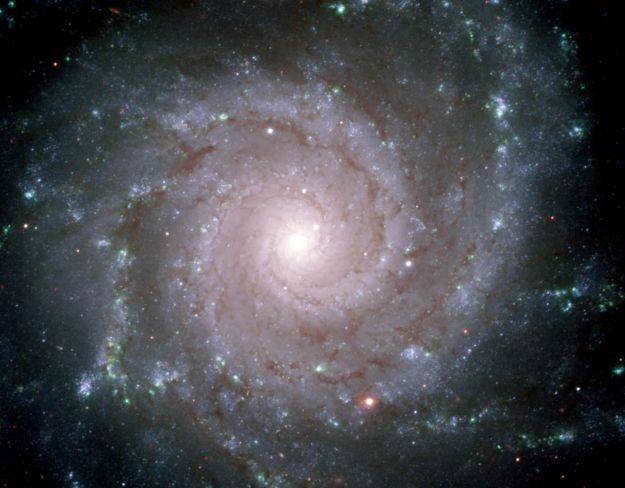
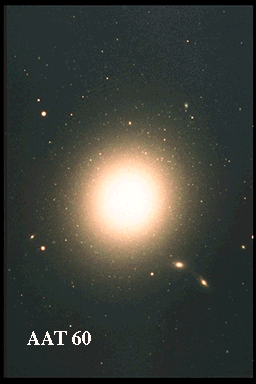
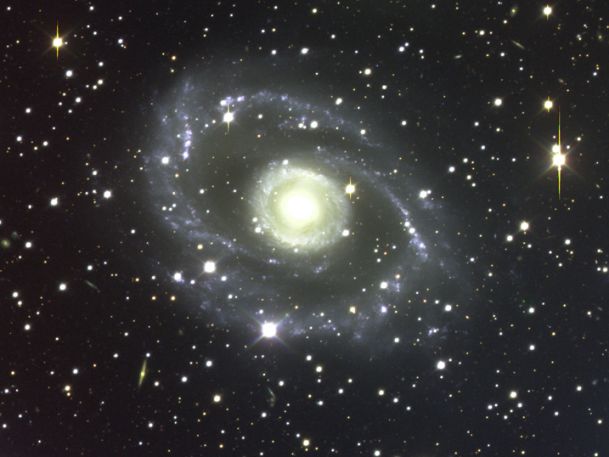


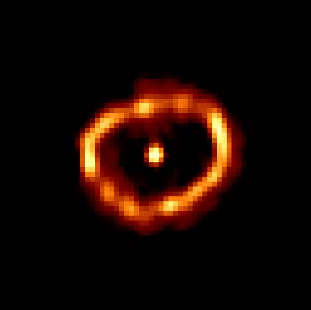
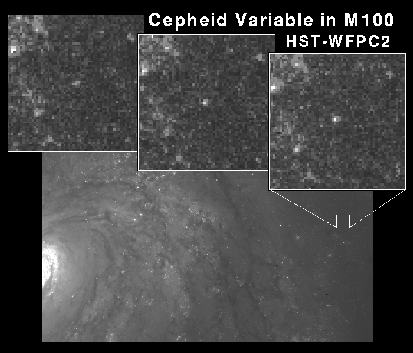

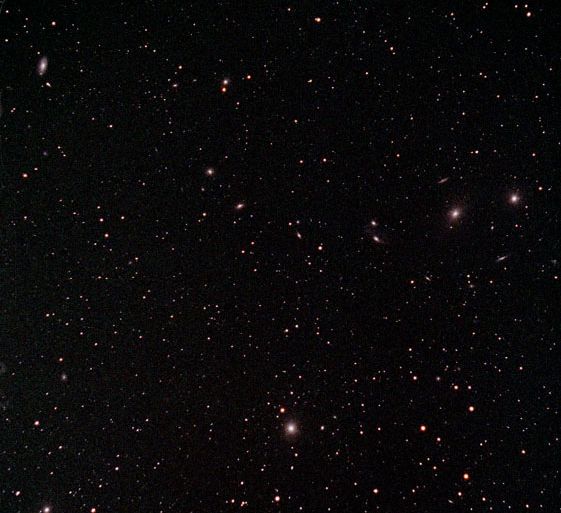

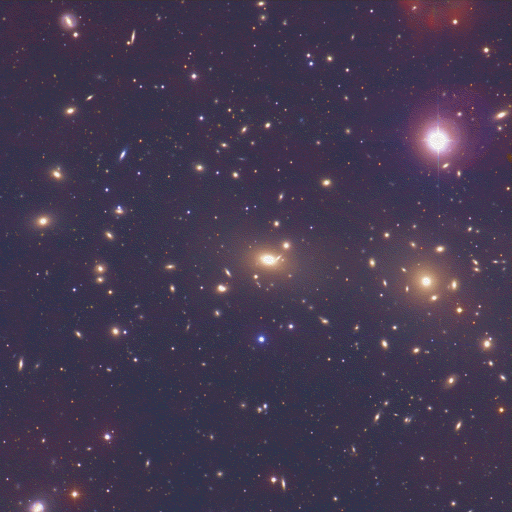
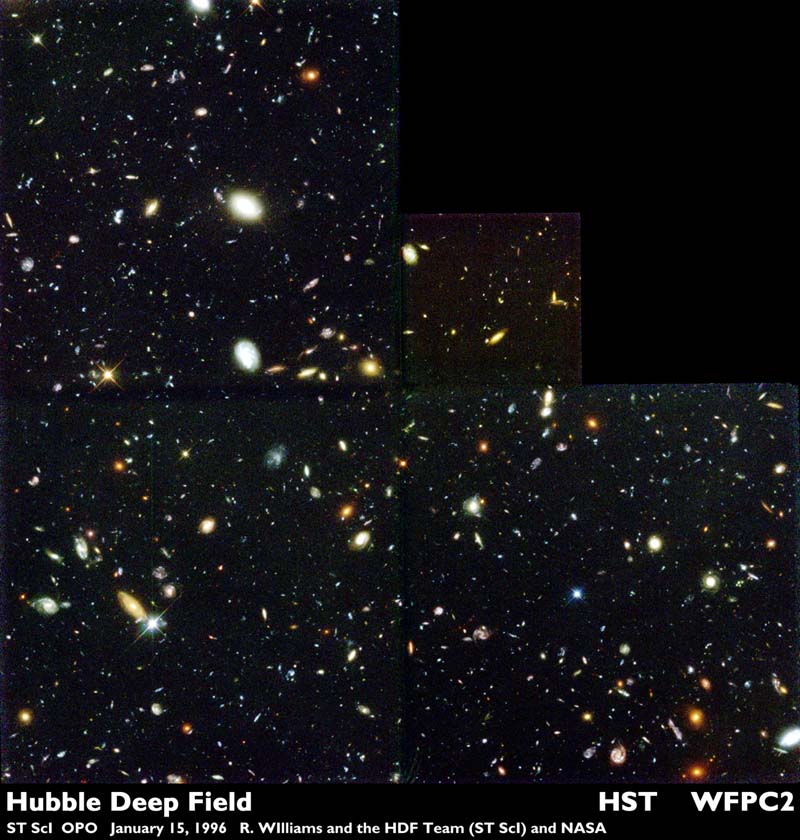

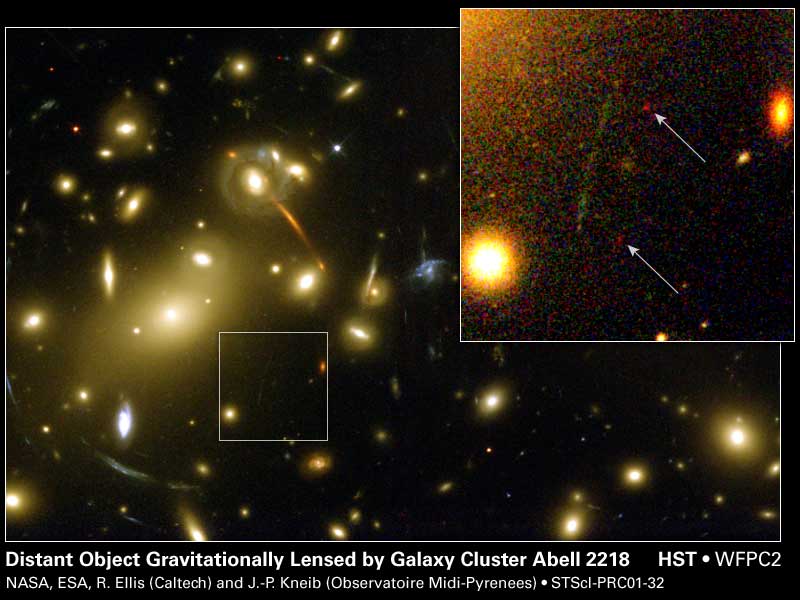
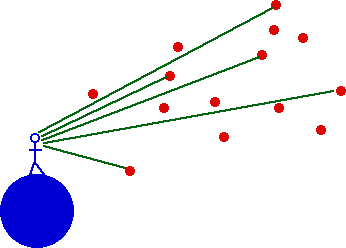
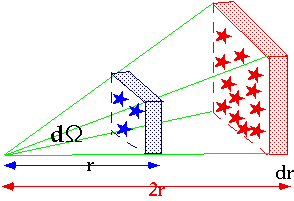

.gif)











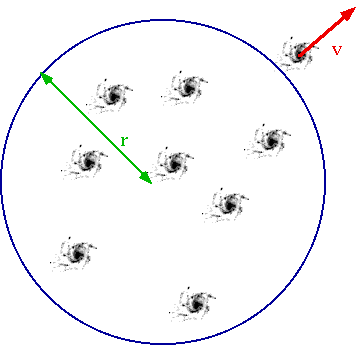











.gif)




